

NEWSPAPER READING IS A HABIT
DON’T BREAK THE HABIT!

READ THE WASHINGTON INFORMER YOUR WAY:
n In Print – feel the ink between your fingers of our Award Winning Print Edition
n On the Web – www.washingtoninformer.com updated throughout the day, every day
n On your tablet
n On your smartphone
n Facebook
n Twitter
n Weekly Email Blast – sign up at www.washingtoninformer.com

202-561-4100


For advertising contact Ron Burke at rburke@washingtoninformer.com ...Informing you everyday in every way

In Memoriam
Dr. Calvin W. Rolark, Sr. Wilhelmina J. Rolark
PUBLISHER
Denise Rolark Barnes
THE WASHINGTON INFORMER
NEWSPAPER (ISSN#0741-9414) is published weekly on each Thursday. Periodicals postage paid at Washington, D.C. and additional mailing offices. News and advertising deadline is Monday prior to publication. Announcements must be received two weeks prior to event. Copyright 2016 by The Washington Informer. All rights reserved. POSTMASTER: Send change of addresses to The Washington Informer, 3117 Martin Luther King, Jr. Ave., S.E. Washington, D.C. 20032. No part of this publication may be reproduced without written permission from the publisher. The Informer Newspaper cannot guarantee the return of photographs. Subscription rates are $45 per year, two years $60. Papers will be received not more than a week after publication. Make checks payable to:
THE WASHINGTON INFORMER
3117 Martin Luther King, Jr. Ave., S.E Washington, D.C. 20032
Phone: 202 561-4100
Fax: 202 574-3785
news@washingtoninformer.com www.washingtoninformer.com
STAFF
Micha Green, Managing Editor
Ron Burke, Advertising/Marketing Director
Shevry Lassiter, WIN-TV Producer
Ra-Jah Kelly, Digital Asset Manager
Lafayette Barnes, IV, Editor, WI Bridge DC
Desmond Barnes, WIN Daily Editor
Anthony Tilghman, Social Media Strategist ZebraDesigns.net, Graphic Design
Mable Neville, Bookkeeper
Angie Johnson, Office/Circulation Manager
REPORTERS
Stacy Brown, National Reporter
Sam P.K. Collins, Political/Education Reporter
Zerline Hughes, Housing Reporter
Brenda Siler, Lifestyle Reporter
Lindiwe Vilakazi, Health Reporter
Ed Hill, Sports Editor
Jada Ingleton, Reporter
PHOTOGRAPHERS
Shevry Lassiter, Photo Editor
Ja Mon Jackson, Asst. Photo Editor
Roy Lewis, Jr.
Robert R. Roberts
Anthony Tilghman
Abdullah Konte


By Micha Green WI Managing Editor
Where Them Books At?: Preparing for a Successful School Year
All summer, people have been singing, “Where them fans at?” as part of the popular 803Fresh song and line dance “Boots on the Ground” (2024). But as students head back to school, The Washington Informer is asking another question: “Where them books at?”
Now, the linguaphile in me knows that the above question is not posed using proper grammar, and I can hear the many educators in my life correcting me with their answers, saying: “The books are behind that preposition.”
However, in honor of the unofficial song of the summer, I’m ignoring grammar rules and proudly remixing the tune to say: “Where them books at? Oh-oh, woah-oh, oh, woah-oh. We’ve got our books in our bags.”
Are you singing it in your head, as you read along? I hope so.
In fact, as back-to-school season starts, I hope that my remix becomes a bit of an earworm, to help families prepare for students’ return to the classroom.
A critical part of being ready for school is having the proper books– textbooks, workbooks and literature being read in class— and without those items, it’s difficult to learn and thrive.
Ensuring that students have all the books necessary for learning in their backpacks– not just on the first day, but throughout the school year– is incredibly important for students’ success.
Having a book checklist for students’ backpacks can be something that families start together and ensure that young people maintain throughout the school year, thus holding them accountable for how they contribute to their own learning and scholastic achievements.
Further, this year The Washington Informer is pushing for more than school readiness, but highlighting the importance of reading. In this special edition, Washington Informer reporter Sam P.K. Collins writes about District literacy efforts, and Terri Schlichenmeyer offers books perfect to help students and parents for the school year.
Beyond reading and books, this back-to-school guide includes an article from Soul Therapy Media’s Julian B. Kiganda on ways to introduce students to medical careers before college, as well as pieces from organizations such as Washington Teachers Union, the DC Public Charter School Board, Community College Preparatory Academy, Prince George’s Community College and MedStar Family Choice.
Every bit of content in this special edition is geared toward ensuring a successful school year, not just for students, but the whole family.
Use the articles and QR codes in this special edition as a resource throughout the 2025-2026 school year and beyond, and remember, sharing is caring, so pass on the helpful information in order for others to be prepared and empowered this back-to-school season and beyond.
Finally, don’t forget to check out The Washington Informer’s weekly educational coverage, offering several stories to keep readers up-to-date on all the critical happenings affecting DMV scholars, including this week’s articles about the cell phone ban in D.C. public and public charter schools and Howard University students turning to online resources to pay tuition.
Whether a young person, parent or community member, it’s important to know what is happening with students, and the best ways to support them. So as the school year gets going, ask young people “Where them books at?” and be sure that they not only have their books in their bags, but are equipped with all the resources to have a successful school year.
g
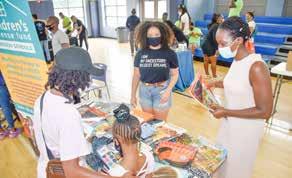
5 Hannan Coleman and Simone Ruskamy from The Children Defense Fund Freedom School hand out free books to children in August 2021. A critical part of being ready to return to the classroom and a successful school year is having the proper books, tools and resources to help with learning and following course work. (WI File Photo)
MIMI’S MUSINGS: BACK TO SCHOOL
Longtime Literacy Advocate Sheila Carr Looks to the New School Year
New Standardized Test Scores Show Another Year of Post-Pandemic Progress
By Sam P.K. Collins WI Staff Writer
As Sheila Carr prepares for her 30th school year as an education advocate, District education officials continue to celebrate what’s been described as consistent gains in reading and math proficiency since students’ post-pandemic return to the classroom.
Even so, Carr says that she and other parents remain anxious about the quality of the literacy instruction that young people receive in District public and public charter schools. For her, it’s imperative that teachers and administrators across the city are equipped with the tools to help young people struggling with dyslexia.
“The D.C. Council and the mayor need to make sure that the D.C. Public Schools (DCPS) Reading Clinic is getting proper funding so that they could train more teachers in the Science of Reading,” said Carr, a mother and grandmother who lives in Ward 7.
In 2018, Carr counted among several parents who advocated for the passage of the Addressing Dyslexia and Other Reading Difficulties Amendment Act, which established a dyslexia screening and intervention program operated by the Office of the State Superintendent of Education (OSSE).
Per OSSE, more than 1,400 teachers citywide have been trained over the last year in how to recognize and tackle dyslexia over the last couple of years.
By the time the Addressing Dyslexia and Other Reading Difficulties Amendment Act, also known as Law 23-191, went into effect, DCPS launched its reading clinic with the goal of equipping teachers with the tools needed to teach young people.
It’s also a place where students, as they would in the classroom, receive one-on-one research-based literacy instruction known as the Science of Reading Curriculum, which focuses on word recognition and language comprehension.
“I’m concerned that the teachers won’t have the support that they need in order to truly implement
the Science of Reading and the new programs that they have in their school so that they can feel comfortable with it and be able to give it out to the children,” Carr told The Informer.
Local Education Officials Celebrate Gains Made in English and Math
In the days leading to the beginning of the 2025-2026 school year, Ferebee confirmed that the DCPS Reading Lab is still up and running.
“We’ve seen so much success with this strategy,” Ferebee said. “We’ve expanded beyond just our lower grades and also extended it to our middle grades as well. It’s something that we’re looking forward to replicating in math as we’re going to launch a similar clinical model for math instruction and professional learning for educators.”
On Aug. 21, education officials celebrated what’s been described as the greatest improvement in English and Language Arts (ELA) proficiency since 2015, and more specifically since before the pandemic.
The 2025 results of the D.C. Comprehensive Assessments of Progress in Education (CAPE) showed that economically disadvantaged students across the District had higher ELA results than in years past. Further, more than 40% of schools experienced an increase of at least 5% in either ELA or math.
Also of significance was a focus on truancy and chronic absenteeism, and the implementation of recommendations issued by a Literacy Education Task Force. Those recommendations include: professional development of teachers and administrators in the Science of Reading Curriculum, training of structured literacy [phonics] by 2030, increase of teacher coaching, and an understanding of high-quality instructional materials by the Office of the State of Superintendent.
State Superintendent Dr. Antionette S. Mitchell credited the Literacy Education Task Force, established in 2022, as a resource in getting teachers and administrators across the public and public charter sectors
on one accord, as it relates to ELA instruction.
“We have committed to providing that professional development to our teachers, and they are picking it up in a really significant way,” Mitchell said. We are delighted with the progress that we’re making. We are on track to train all of our teachers in this approach by 2030.”
Carr Looks to the New School Year, Anxious but Hopeful
As dozens of law enforcement agencies, and even the National
Guard, flood the District, and particularly communities east of the Anacostia River, Carr continues to encourage young people to learn about their rights.
She said she did so as recently as last week, when President Donald J. Trump evoked Section 740 of the D.C. Home Rule Act, which allows him to temporarily federalize the Metropolitan Police Department.
“Because of the literacy rate and dropping out of school, they’re in the corners, they’re in areas where the establishment has deemed as not acceptable,” Carr said. “I told them that not only could they be arrested,
but..shipped out the country.”
Having been diagnosed at age 40 with dyslexia– a reading disorder characterized by identifying how speech sounds relate to letters and words— Carr advocates for students overlooked in the classroom so that they do not suffer in school or adulthood.
“People who struggle with reading also struggle with employment and housing and health and other things. That’s why I fight so hard because it’s a trickle down effect,” Carr told The Informer. g

Open to 3rd - 8th grade students enrolled in D.C. public, charter, private, parochial or home schools.
Registration opens August 19, 2025
National Enrollment for schools opens at spellingbee.com
Contact your school coordinator or call The Washington Informer at (202) 561-4100

Sponsorship opportunities are available – email: rburke@washingtoiinformer.com.
For our Prince George’s County Bee, please contact Chauka Reid, chaukareid@yahoo.com

WTU Welcomes You Back to School
How parents and students can prepare for a great school year
Lisa S. Haynes General Vice President of the Washington Teachers Union
I’ve been a teacher for 40 years, the last 30 as a special educator in the District of Columbia Public Schools. Each new school year offers something different for educators, students and parents, but the one constant is that the beginning of the year is a time of anticipation. Starting the school on solid footing is the best way to make the most of the academic year.
Right off the bat, it’s really important for parents to establish a clear line of communication with the school and their child’s educators. Students also should know that educators, coun-


selors and other school support staff are there for them. If you are experiencing any kind of trouble or have concerns about anything, reach out. There’s no shame in asking for help. Every school employee’s intention is to ensure that the school is creating an educational environment that is fruitful, supportive, enjoyable and safe. And memorable, in a good way! Attendance has been a problem in many schools. It’s so important for parents to instill the importance of having their kids arrive at school every day and on time. In most schools, kids should arrive around 8:45 a.m. During that time, breakfast is available and even some social and emotional assistance is offered—both setting the stage for the day’s learning. If kids miss out on breakfast, hunger can be a distraction from concentrating and doing their best.
For kids who are struggling academically, there is help. Parents can enroll their child in after-school en-
richment programs that are available on many campuses, especially in the elementary grades. This will give children an opportunity to build a great foundation for years to come. Many middle schools also offer a variety of programs. On the high school level, DCPS uses the High-Impact Tutoring Program, which involves intensive small-group sessions, often during the school day, with a low tutor-to-student ratio and a focus on personalized learning. Safety, of course, is of paramount importance in our schools. I strongly urge students and parents to let the school know if they don’t, for any reason, feel comfortable with the level of safety. If you see or hear something, say something to the
principal, the parent-teacher organization or some other educator at the school. We want to make sure that doors are locked, doors to the outside are never propped open and security cameras work.
Vigilance is key.
The Washington Teachers’ Union, which represents DCPS educators, is fighting to give every child a high-quality education. What’s good for students is good for educators. We want safe and welcoming schools—places where every parent will want to send their kids and every kid will want to attend.
Let’s work together as partners and make the 2025-26 school year the best ever! g

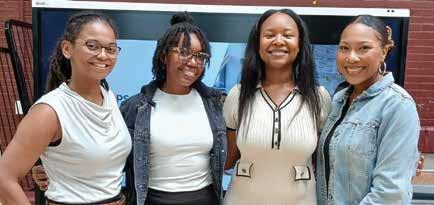
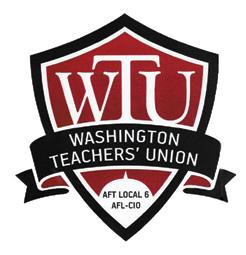

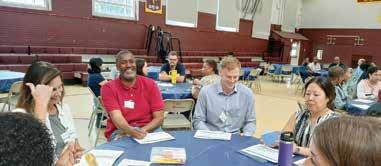
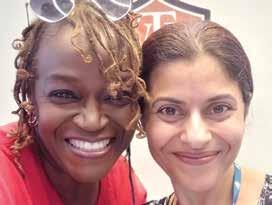
5 Lisa Haynes is general vice president of WTU and most recently an educator at Bunker Hill Elementary School.
We are part of the great team of DCPS educators excited about the new school year.
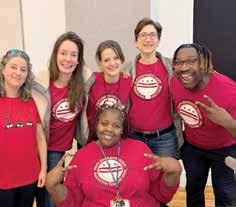


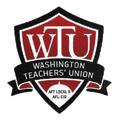



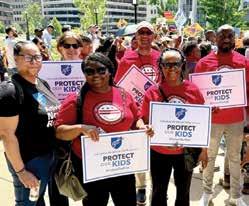
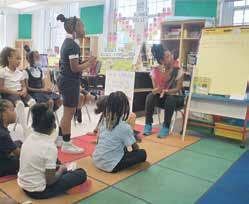
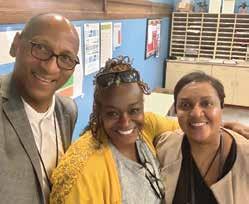



Let’s work together to make it the best year ever!

5 Laura Fuchs, President of the Washington Teachers Union

WTU Stands in Solidarity with the Community
What’s good for kids is good for educators: Public education with partners is the way to success
Laura Fuchs, President of the Washington Teachers Union
Back-to-school season is an exciting time. Students are looking forward to seeing their friends, making new ones and building on what they learned in the previous school year. For some, it might be a bit scary or intimidating, but school staff will be there to help them get through it. For educators, we are eager to do what we do best—create a learning environment in which students want to come to school and do well.
But this year we have to face the very real challenges surrounding us.
We must take proactive measures so our students can learn and thrive and so educators can teach to the best of our abilities. Public education is a democratic good, yet some disturbing issues are confronting us—both outside and inside our school doors—that can upend the very existence of our public schools. The most recent and outrageous effort is President Donald Trump’s attempt to militarize our city. He now has federalized our D.C. Metropolitan Police Department—a particularly unconscionable move for someone who failed to call in the National Guard when we had an ac-
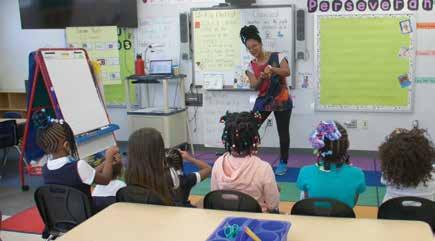
Welcome Back to DCPS

Students Educators and School Staff


Families and Community
Students and educators are setting out goals and plans to make this school year the best ever. We know there might be roadblocks on the path to success, but we will be there every step of the way. Students, families and other members of the community can rely on teachers and other school staff to be proactive and ensure that kids get what they need to succeed.
What’s good for students is good for educators—less testing, more flexibility for teachers to teach, fewer troops on the streets, and more funding for programs that encourage kids to stay in school by returning the joy of learning to our classrooms.
The WTU can’t do it alone. We want to work in partnership with district officials, families and members of the community to get it done. Join us in making this school year a great one!
tual riot on Jan. 6. I wish he would give as much attention to finding ways to bring joy to our classes and support our families to boost attendance.
We have immigrant families who fear U.S. Immigration and Customs Enforcement raids. Children are scared their families could get picked up and deported; they worry their families won’t be there when they get home from school. We need the District of Columbia Public Schools to fully acknowledge the problem and give us proper training to handle these situations.
And then there are the ongoing problems with the privatization of education. Rather than keep up the charade that voucher and charter schools are better than our neighborhood public schools (www. ncpecoalition.org/2019-dept-of-edstudy-summary), we should be lifting up the voices of educators, families and students to support what we know is best for our kids.
With the overreliance on standardized tests to rate, label and punish so many of our schools as “low
performing,” we are seeing resources that could help kids get stretched thinner and thinner. Teachers are forced to spend too much time testing and preparing for tests rather than allowing kids to experience the true joy of learning something relevant, interesting and new. We need to be able to focus on equity and ensure that those students who need the most support get it.
But together, we can and should face these challenges. With solidarity among educators, students, families and communities, we can chart a path forward. We need to listen to one another’s needs and support one another through our collective struggles. The times are hard, but we’ve seen that before and have worked through them together. The Washington Teachers’ Union is there for you, your students and our communities. We want to work with you on your concerns and will stand with you during these uncertain times. By building relationships with one another, we can stand up to all those who seek to thwart us.
g
The mission of the Washington Teachers’ Union is to:

• Raise the standards of the teaching profession by ensuring and promoting conditions vital to effective services for all students.
• Define and strengthen services of the schools and to afford employees with a full opportunity to participate in the democratic decision-making process within schools for the common good.
• Protect the legal rights of all members.
• Provide and maintain, as the sole and exclusive collective representative for members of the bargaining units, the effective implementation of the collective bargaining agreements between the Washington Teachers’ Union and other employers.
• Make employees aware of their political and social rights and responsibilities.
Shaping the Future of D.C,’s Health Workforce
By Julian B. Kiganda Soul Therapy Media
As health disparities in the Black community remain severe, and, in some cases, continue to worsen, many wellness experts and advocates note the importance of increasing representation of Black health care providers.
For instance, while Black infants in the U.S. face a mortality rate 2.4 times higher than non-Hispanic whites (Office of Minority Health, 2022), research shows that a 10% increase in Black primary care physicians (PCP) can boost life expectancy in the Black community by an estimated 31 days.
With Black physicians accounting for only 5.7% of doctors nationwide, and a push for more diversity in health and medicine to improve equity and outcomes in African American communities, a number of innovative programs and organizations are working to grow this talent pipeline and tighten the gap.
“Giving students insight into the workforce helps them consider career options and become stronger students,” said District of Columbia Public Schools (DCPS) Chancelor Lewis D. Ferebee, who has been integral in expanding the DCPS Career and Technical Education (CTE) programs. “Many may not know all the opportunities around them—I want to close that gap.”
DCPS CTE Jumpstarts Health Careers
Under Ferebee’s leadership, CTE has grown substantially, giving thousands of students access to explore a diverse range of career pathways.
“I’m proud we’ve seen a 64% increase in CTE enrollment,” Ferebee told The Informer. “Participation is important.”
Almost half of the students in the District currently participate in a CTE program. From health care and architecture to hospitality and sports, students get to explore a variety of opportunities and build the skills they need to succeed beyond graduation.
Masaley Kargbo, director of the Academy of Health Sciences at Calvin Coolidge Senior High School, said her school’s program works “to make
sure minorities can see themselves in a health care career.”
The program director recounted a recent graduate who, despite challenges, earned a full scholarship to Marymount University, where he’ll study forensics.
“He had experienced some challenges with family and coming to the country with language barriers,” she said. “He graduated and is maximizing his opportunities.”
Looking to the future, Ferebee expressed his commitment to continually improving CTE programs, ensuring they keep pace with the changing workforce and D.C.’s ambitions as a tech hub.
“We want to be ahead of the curve and make sure our students are ready for whatever comes next,” Ferebee said.
Future Kings Mentors To-
morrow’s STEM
Leaders
Future Kings, a 501(c)(3) nonprofit founded by Dr. Arik King in 2010, is dedicated to supporting boys of color from economically challenged communities. This year-round, after-school program helps young men in grades 6–12 from underserved areas discover careers in science, technology, engineering, and mathematics (STEM).
King’s career began as an electronics technician in the Air Force before moving into computer networking and eventually starting his own business.
“I sold that business and became a teacher because I saw a need for more Black men in the classroom,” he told The Informer.
Today, Future Kings, with its dedicated team of mentors and professionals, serves 130 minority youth each year through experiential programs hosted on college campuses. King believes early intervention is crucial, emphasizing that when students are given the right tools and confidence in their abilities, they rise to the occasion—but that support must start early.
Through his organization, King hopes to uncover untapped talent.
“There are a lot of hidden geniuses out there—kids who are B and C students not because they’re not smart,
but because they’ve never been shown their potential,” said King. “That’s who we’re after.”
George Washington University’s DC HAPP Expands Access to Medicine
Local universities are also stepping up to diversify the talent pipeline in health and medicine.
George Washington University’s School of Medicine and Health Sciences launched the DC Health and Academic Prep Program (DC HAPP) to expand access to health careers for underrepresented students.
“Many of our scholars are unaware of the full range of careers in health care, or they assume they are out of

reach,” said Jalina Booker, director of DC HAPP. “We prioritize early exposure to a variety of health-related fields to ensure we increase their understanding and knowledge of all the career paths available.”
Booker shared that the program envisions young people from diverse backgrounds walking into college classrooms and hospitals with confidence, fully aware of the opportunities
available to them.
“Every scholar who steps into this program carries the potential to return to their communities as future clinicians, advocates, and leaders,” she said.
DC HAPP empowers students to believe those careers are attainable.
”At its core, DC HAPP is about more than just academic or professional exposure; it’s about mentoring the whole student,” said Booker. g

5 Through Future Kings, Inc., students are exposed to fields in science, technology, engineering and mathematics (STEM). (Courtesy Photo/Future Kings, Facebook)
Getting
kids ready for back-to-school?

Be smart. Start smart.
It’s time to plan ahead to get kids ready for the upcoming school year. Schedule your child’s yearly well-child visit, dental screening, and immunizations so they are healthy and ready to learn.
From July 1 to September 30, 2025, kids ages 3–11 can receive a back-to-school swag backpack and may qualify for gift card rewards for completing a well-child visit and dental screening.
Your child’s healthcare provider must complete Universal and/or Oral Health Forms before they can enter school. Bring these forms to your child’s visits.


MedStar Family Choice District of Columbia is committed to supporting you in living a healthy life so you can feel your best. This information will help you understand more about well-child visits.
What is a well-child visit?
Well-child visits are preventive checkups performed by your child’s doctor near your child’s birthday or at any time of the year. During these visits, your child’s doctor or healthcare provider can look for potential health issues and treat them before your child gets sick. This includes providing vaccines that are necessary for your child to attend school.
Please keep your child safe with vaccines; they are safe and effective.
They have been saving children’s lives for many years. Altogether, vaccines can prevent 16 different types of disease. Children get vaccines at well-child visits, so it is important to make sure that your child goes to every visit their doctor recommends. Getting vaccines at the right time can help keep your child from becoming very sick.
Most vaccines are given by injections (shots). Talk to your child’s doctor or healthcare provider about what shots they need at the following ages:
• Birth • 6 months • 4–6 years
• 1–2 months • 12–18 months • 11–12 years
• 4 months • 2–3 years • 13–18 years
Your child’s healthcare provider must complete Universal and/or Oral Health Forms before they can enter school. Bring these forms to your child’s visits. The Universal Health Certificate is available online at DCHealth.DC.gov/Service/School-HealthServices-Program. g


A New Chapter in DC Public Charter School Accountability
By Dr. Michelle Walker-Davis Executive Director, DC Public Charter School Board
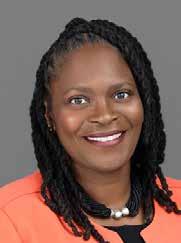
When I joined the DC Public Charter School Board (DC PCSB) five years ago, my vision was clear: every family should have access to quality school options and a transparent, equitable way to measure school performance. Achieving that vision required building an accountability system that reflects our schools’ progress and challenges and helps every student, family, and educator see a clear path toward excellence.
That vision is now reality. This year, for the first time since the COVID-19 pandemic, DC PCSB is publicly reporting school performance data and launching our revised academic accountability system, ASPIRE.
ASPIRE which stands for Annual School Performance Index Report & Evaluation is more than an acronym. Built through years of collaboration with school leaders, educators, families, and community members, it centers growth, equity, and opportunity while giving the public a clear view of how schools are performing. It goes beyond a single test score, using multiple measures like student growth, achievement, attendance, re-enrollment, and school climate to provide a fuller picture of success.
The pandemic disrupted learning in ways we are still working to fully understand. Pausing public reporting during those years allowed us to listen, reflect, and rethink how to measure success as we built our revised academic accountability system. We heard from families who wanted clearer, easier-to-read information. We heard from educators who wanted an accountability system that recognized growth as well as proficiency. And we heard from community members who wanted assurance that every student would have access to quality opportunities.
Public accountability matters because it builds trust, informs decisions, and keeps us focused on the right priorities. ASPIRE will give families the information they need to make informed choices about their children’s education, help policymakers target resources where they are most needed, and provide school leaders with actionable insights to strengthen teaching and learning. Our Board members will use ASPIRE to make school oversight decisions. Just as importantly, it will make opportunity gaps visible. When data reveals disparities, it creates an obligation to act. Transparency can be uncomfortable, but those moments of truth are where progress begins.
The first ASPIRE results will be shared this school year. They will give us a baseline—a starting point from which schools, families, and the public can work together. Over the next two to three years, as the system builds momentum, we expect it to become a trusted, go-to source for understanding how our schools are serving students.
Every child in the District deserves a quality education, and every family deserves to know how their school is doing. With the launch of ASPIRE, DC’s public charter schools are taking that step forward—together.
Learn more and explore your school’s results: https://dcpcsb.org/aspire-system g

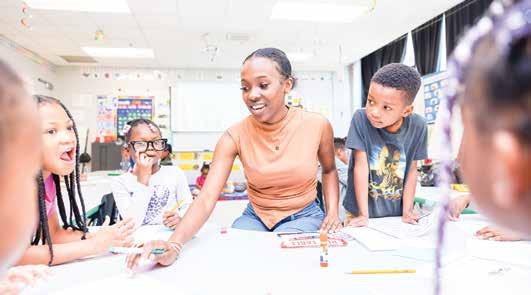


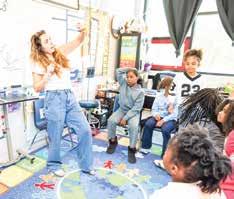
5 Dr. Michelle Walker-Davis Executive Director DC Public Charter School Board
Back-to-School Books for All Good Reads for Children and Parents as Youth Return to the Classroom
By Terri Schlichenmeyer WI Contributing Writer
While the back-to-school season can be exciting and fun for some, it can also be anxiety-inducing and scary for others.
Check out these books to make the transition back to school a happy moment for all!
‘Getting Ready for Kindergarten: A First Day of School Book’ (2024)

‘Make New Friends:
A Picture Book’ (2025)
Elementary-age children will enjoy reading “Make New Friends: A Picture Book” by Joshua David Stein, illustrated by Mariachiara Di Giorgio (Abrams Books for Young Readers, $18.99).
Young Tomasso is new at school and it’s hard to make friends, so he comes up with a creative solution for when his father asks about Tomasso’s friends. So what will he do when his secret is about to be discovered?
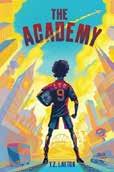
‘The Academy’ (2024)
Middle-grade is hard, so the sports-minded tween will like reading “The Academy” by T.Z. Layton (Sourcebooks Young Readers, $9.99). It’s the story of 12-year-old Leo who loves soccer, and he’s excited when an elite team invites him to play. Competition is fierce and that’s tough on a kid who feels like he doesn’t measure up. Will he be good enough to make the team? Meant for 7-to-13-year-olds, this is the first in an intended series.
For the child that’s all new to the whole idea of school, “Getting Ready for Kindergarten: A First Day of School Book” by Vera Ahiyya, illustrated by Debby Rahmalia (Random House Books for Young Readers, $5.99) will get them excited for what’s ahead. It’s a cute little story of Cynthia and all the things she’ll need for school, and it includes a punch-out First Day of School sign you can use for the next thirteen years!


‘Slow Violence: Confronting Dark Truths in the American Classroom’
(2025)
As parents work to keep a pulse on their children’s education, “Slow Violence: Confronting Dark Truths in the American Classroom” by Ranita Ray (St. Martin’s Press, $30) may raise some eyebrows. In 2017, Ray entered a classroom in Las Vegas to study resources in the public schools there. What she learned was shocking: teachers, even well-meaning ones, sometimes seemed to put minority students on what Ray calls a “slow violence” track that became a major detriment to their education. The overall results of her research are a clarion-call to parents of all school-age children, especially those in the tender lower grades.
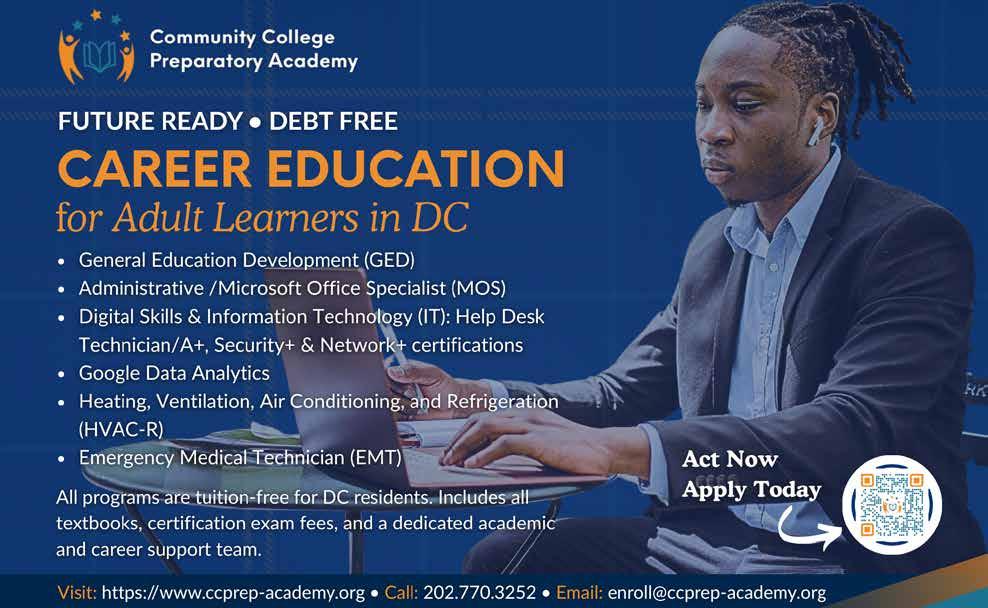
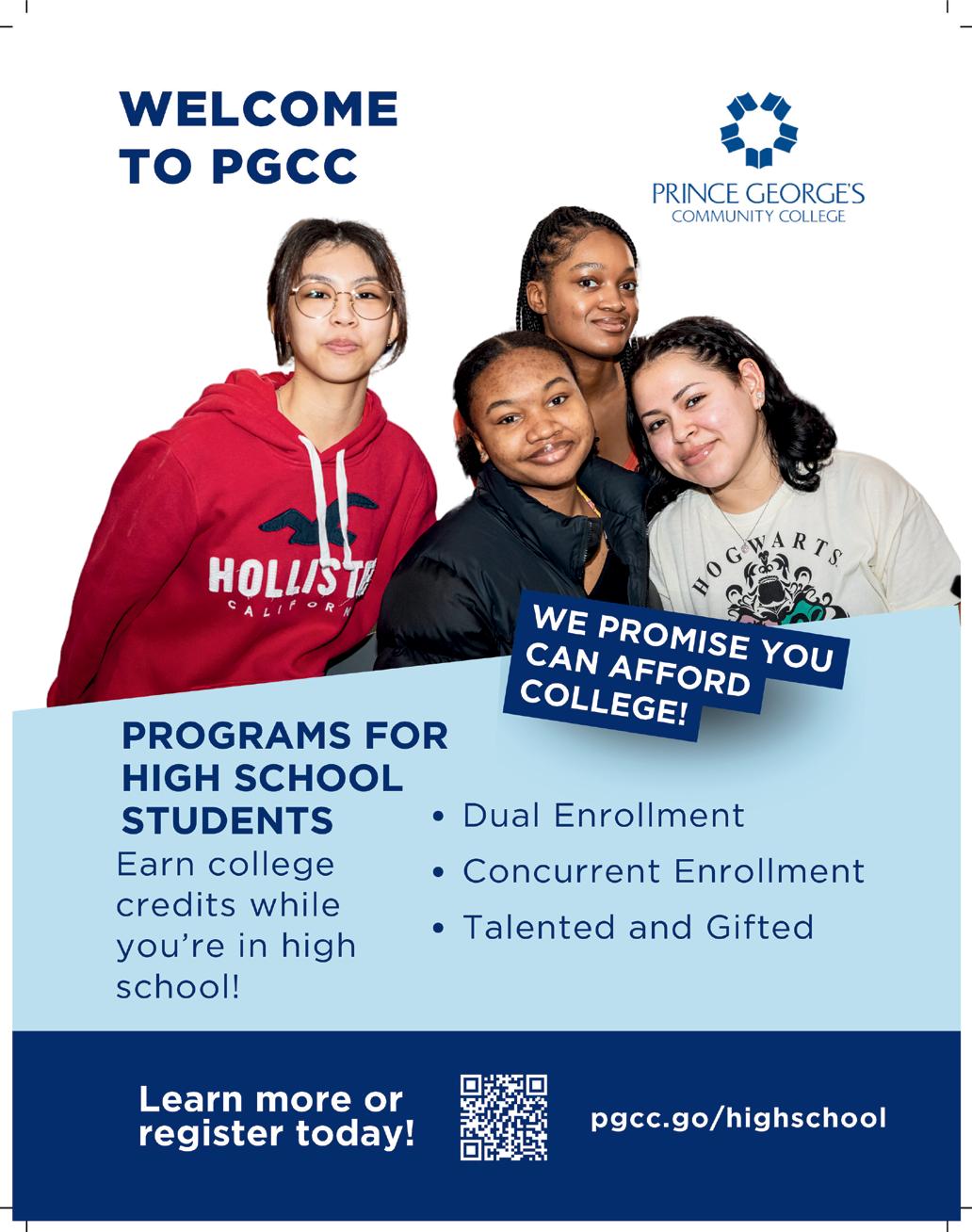

Welcome Back to DCPS


Students Educators and School Staff
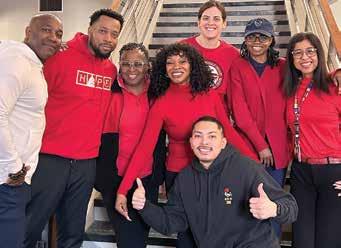
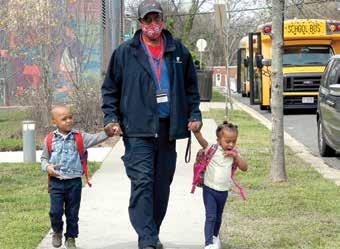
Families and Community
Students and educators are setting out goals and plans to make this school year the best ever. We know there might be roadblocks on the path to success, but we will be there every step of the way. Students, families and other members of the community can rely on teachers and other school staff to be proactive and ensure that kids get what they need to succeed.
What’s good for students is good for educators—less testing, more flexibility for teachers to teach, fewer troops on the streets, and more funding for programs that encourage kids to stay in school by returning the joy of learning to our classrooms.
The WTU can’t do it alone. We want to work in partnership with district officials, families and members of the community to get it done. Join us in making this school year a great one!
